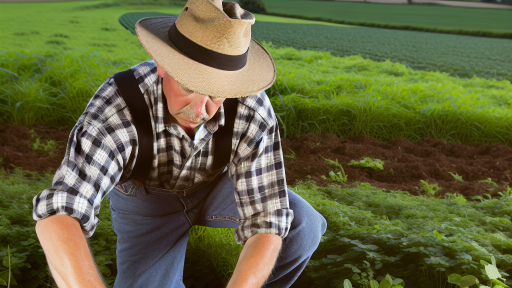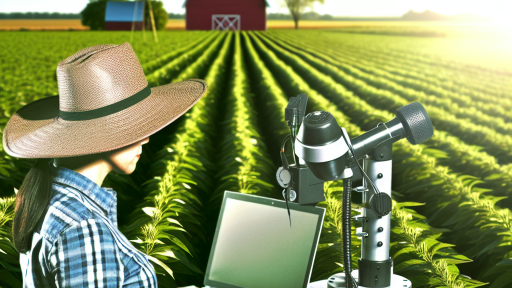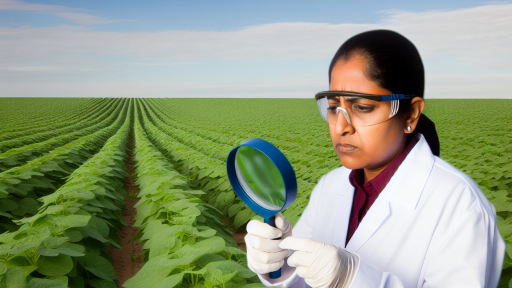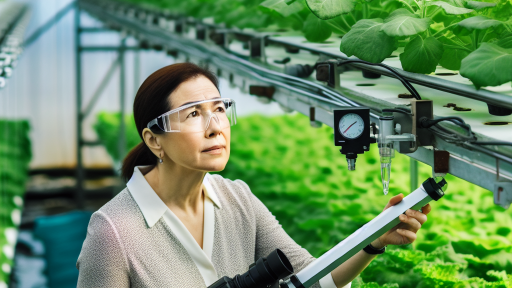Introduction to Automated Crop Monitoring Systems
Automated crop monitoring systems revolutionize agriculture.
These advanced technologies enhance how farmers manage their crops.
First and foremost, they provide real-time data about crop health.
Consequently, farmers can make informed decisions quickly.
The Importance of Crop Monitoring
Crop monitoring is crucial for maximizing yields.
Farmers can identify potential issues early on.
In addition, they can optimize resource usage.
This contributes to improved environmental sustainability.
How Automation Enhances Efficiency
Automation reduces the need for manual inspections.
This saves both time and labor costs.
Moreover, automated systems consistently monitor conditions.
Consequently, they help farmers respond to changes proactively.
Technological Components of Monitoring Systems
These systems typically include sensors and drones.
Sensors gather data on soil moisture, temperature, and nutrients.
Drones capture aerial images to assess crop health visually.
Transform Your Agribusiness
Unlock your farm's potential with expert advice tailored to your needs. Get actionable steps that drive real results.
Get StartedThis data integrates seamlessly into user-friendly platforms.
Benefits of Automated Crop Monitoring
Automated crop monitoring offers numerous advantages.
- Increased accuracy in data collection
- Timely alerts for irrigation and fertilization
- Improved crop yield through better management
As a result, farmers gain a competitive edge in the market.
Challenges in Implementation
Implementing these systems can pose challenges.
Initial costs may deter some farmers.
Additionally, technical expertise might be required.
However, training and support are often available.
Ultimately, overcoming these hurdles leads to valuable outcomes.
Benefits of Automated Crop Monitoring for Farmers
Enhanced Crop Health Monitoring
Automated systems continuously monitor crop health.
This enables farmers to detect issues early.
By identifying pests and diseases promptly, farmers can take action swiftly.
Consequently, crop yields can improve significantly.
Ultimately, healthier crops lead to higher profits.
Efficient Resource Management
Automated crop monitoring helps optimize resource use.
Farmers can manage irrigation more efficiently.
As a result, water consumption decreases, saving costs.
Additionally, it allows for precise fertilization efforts.
This targeted approach reduces waste and enhances soil health.
Data-Driven Decision Making
Automated systems provide rich data insights.
Farmers can analyze trends in crop performance.
Such information informs better farming practices.
Consequently, decision-making becomes more strategic.
Farmers can plan planting schedules effectively.
Increased Labor Efficiency
Automation reduces the workload on farmers.
Showcase Your Farming Business
Publish your professional farming services profile on our blog for a one-time fee of $200 and reach a dedicated audience of farmers and agribusiness owners.
Publish Your ProfileInstead of constant field checks, technology does the monitoring.
Farmers can focus on other critical tasks.
This leads to better overall farm management.
Moreover, it potentially lowers labor costs.
Real-Time Alerts and Notifications
Automated systems send real-time alerts for issues.
Farmers can respond immediately to adverse conditions.
This timely information helps mitigate risks effectively.
As a result, crop losses can be minimized.
Farmers feel more in control of their operations.
Types of Technologies Used in Automated Crop Monitoring
Drone Technology
Drones revolutionize crop monitoring by offering aerial views of large fields.
Farmers utilize drones to gather real-time data on crop conditions.
They can quickly capture high-resolution images for analysis.
This technology enhances precision agriculture significantly.
Sensors and IoT Devices
Wireless sensors play a crucial role in automated monitoring systems.
These devices collect data on soil moisture and temperature.
Farmers rely on IoT devices to monitor environmental conditions remotely.
They enable timely interventions based on accurate data.
Satellite Imagery
Satellite imagery provides a comprehensive overview of agricultural land.
Farmers can track crop health over wide areas using this technology.
This method allows for long-term monitoring and analysis.
The data helps in making informed management decisions.
Machine Learning Algorithms
Machine learning algorithms analyze data from various sources.
They identify patterns and predict crop yields accurately.
Farmers benefit from actionable insights generated by these algorithms.
Consequently, they can optimize their resource usage effectively.
Mobile Applications
Mobile applications provide farmers with easy access to monitoring tools.
These apps allow for quick data entry and analysis.
Farmers can track their crop statuses directly from their smartphones.
This accessibility enhances decision-making processes in real-time.
See Related Content: Precision Agriculture Techniques For Modern Farmers
Data Collection Methods in Crop Monitoring Systems
Introduction to Data Collection
Data collection is vital for effective crop monitoring.
Farmers use various methods to gather essential information.
This data informs decisions about crop health and management.
Remote Sensing Technologies
Remote sensing captures data from a distance.
This method uses drones and satellites to monitor large areas.
Vegetation indices provide insights into plant health.
For instance, NDVI helps assess photosynthetic activity.
Soil Moisture Sensors
Soil moisture sensors provide real-time data on water levels.
Farmers can detect drought conditions early.
This technology helps optimize irrigation practices.
Showcase Your Farming Business
Publish your professional farming services profile on our blog for a one-time fee of $200 and reach a dedicated audience of farmers and agribusiness owners.
Publish Your ProfileConsequently, it promotes water conservation.
Weather Stations
Weather stations collect local weather data.
Temperature, humidity, and precipitation measurements assist farmers.
This information helps in predicting crop diseases.
Moreover, it supports timely interventions to protect yields.
Mobile Applications
Mobile applications facilitate data collection from the field.
Farmers can easily input observations via smartphones.
Additionally, these apps often offer analysis tools.
As a result, farmers can make data-driven decisions on-site.
Integration of Data Sources
Integrating multiple data sources enhances monitoring accuracy.
Farmers benefit from a holistic view of their crops.
The combination of remote sensing, soil data, and weather info increases reliability.
Ultimately, this leads to better farming practices and yields.
Discover More: Implementing Quality Control in Post-Harvest Steps
Integration of IoT in Agriculture: Enhancing Crop Monitoring
Introduction to IoT in Agriculture
The Internet of Things (IoT) transforms agriculture significantly.
Farmers use IoT devices to gather real-time data.
This data improves decision-making and boosts productivity.
Benefits of Automated Crop Monitoring
Automated systems monitor crops efficiently and accurately.
They reduce the need for manual labor and save time.
Moreover, these systems provide crucial insights into crop health.
They identify pest infestations and disease early on.
This proactive approach minimizes crop losses significantly.
Components of IoT-Based Monitoring Systems
These systems rely on several important components.
- Sensors measure soil moisture, temperature, and nutrient levels.
- Drones capture aerial images for comprehensive analysis.
- Data analytics platforms interpret the information.
Each component plays a vital role in crop monitoring.
Challenges in Implementation
Despite benefits, farmers face challenges with IoT adoption.
Initial costs for equipment and setup can be high.
Moreover, technical expertise is necessary for operation.
Integration with existing farming practices also poses difficulties.
Future of IoT in Agriculture
The future of IoT in agriculture looks promising.
Advancements in technology will simplify adoption.
Additionally, new solutions will enhance crop management.
As awareness grows, more farmers will embrace IoT.
You Might Also Like: Temperature Control Strategies for Storage Facilities
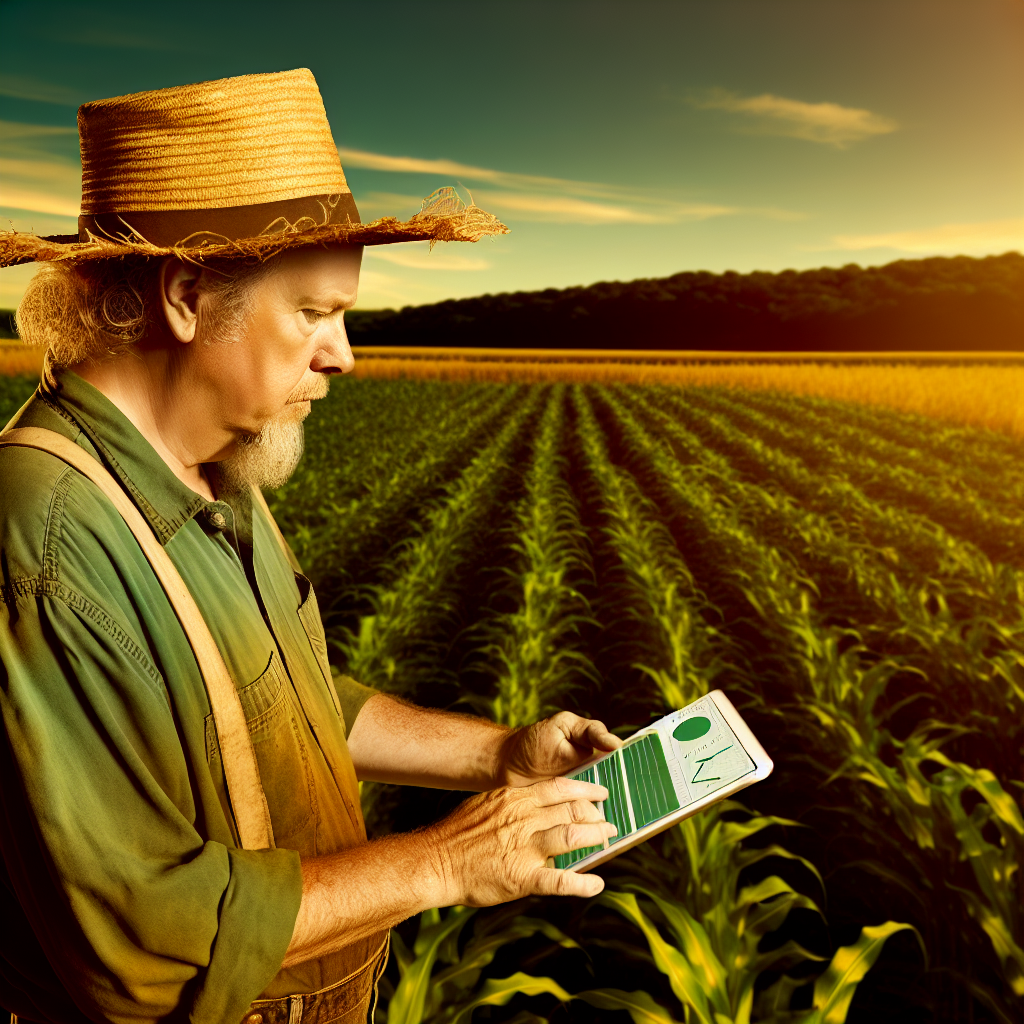
Challenges Faced in Implementing Automated Monitoring Systems
Initial Costs of Implementation
The initial investment for automated monitoring systems can be substantial.
Farmers often find it hard to allocate their budgets for new technology.
Many small-scale farmers may struggle to afford advanced systems.
Additionally, the cost of maintenance further adds to the burden.
Technical Expertise Requirements
A lack of technical expertise can hinder successful implementation.
Farmers may need training to effectively operate these systems.
This training process requires time and resources that may be scarce.
Showcase Your Farming Business
Publish your professional farming services profile on our blog for a one-time fee of $200 and reach a dedicated audience of farmers and agribusiness owners.
Publish Your ProfileMoreover, troubleshooting issues can be challenging without skilled personnel.
Integration with Existing Practices
Integrating new technology with traditional farming methods can be complex.
Farmers must adapt their workflows to accommodate automated systems.
This adaptation can create tension and resistance to change.
Moreover, compatibility issues with existing tools may arise.
Reliability and Accuracy of Data
The reliability of automated monitoring systems is a crucial concern.
Farmers depend on accurate data to make informed decisions.
Faulty sensors can lead to incorrect assessments of crop conditions.
Additionally, data calibration is necessary to maintain accuracy.
Environmental Variabilities
Environmental factors can significantly affect system performance.
Weather conditions can impede the functionality of monitoring devices.
Moreover, varying soil types may complicate data collection.
Farmers must consider these variables to ensure system effectiveness.
Learn More: Sustainable Farming Through Advanced Crop Monitoring
Case Studies: Successful Implementation of Automated Crop Monitoring
Overview of Successful Implementations
Farmers worldwide increasingly adopt automated crop monitoring systems.
These systems enhance productivity and promote sustainable practices.
Innovative approaches enable farmers to monitor crop health in real-time.
This technology captures valuable data essential for decision-making.
Farm Case Study: GreenFields Agriculture
GreenFields Agriculture operates a large-scale farm in California.
They integrated drones equipped with imaging technology for crop analysis.
This system identifies areas that require water, nutrients, or pest control.
As a result, crop yield improved by 25% within the first year.
Implementation Process
GreenFields began by selecting the right drone technology.
Next, they conducted pilot tests to evaluate its effectiveness.
Training sessions for staff ensured smooth integration into daily operations.
Outcomes and Benefits
The farm observed significant savings in water usage.
Also, the crop health monitoring system minimized chemical application.
Consequently, GreenFields enhanced their sustainability practices.
Farm Case Study: River Valley Farms
River Valley Farms is located in the Midwest United States.
This farm adopted soil sensors to monitor moisture and nutrient levels.
By leveraging this technology, they optimized irrigation scheduling.
As a result, they reduced water usage by 30%.
Implementation Process
River Valley Farms installed sensors across their fields.
They collected data continuously to analyze soil conditions.
This information allowed farmers to make informed irrigation decisions.
Outcomes and Benefits
The farm experienced increased crop resilience during drought conditions.
Overall operational costs decreased due to efficient resource management.
Additionally, this strategy improved overall crop quality and yield.
Farm Case Study: Coastal Growers
Coastal Growers, situated in Florida, focused on fruit production.
They deployed satellite imaging for monitoring crop health from above.
Showcase Your Farming Business
Publish your professional farming services profile on our blog for a one-time fee of $200 and reach a dedicated audience of farmers and agribusiness owners.
Publish Your ProfileThis technology provides a comprehensive view of the entire farm.
Consequently, they achieved higher accuracy in assessing crop conditions.
Implementation Process
The farm partnered with a technology provider for satellite imagery.
They integrated this data with their existing management systems.
Training programs ensured staff could effectively use the new tools.
Outcomes and Benefits
Coastal Growers realized a more targeted approach to fertilization.
This improved the nutrient uptake of their crops significantly.
Moreover, they enhanced their ability to predict harvest times.
Future Trends in Automated Crop Monitoring Technologies
Integration of Artificial Intelligence
Artificial intelligence plays a crucial role in crop monitoring advancements.
This technology enables precise data analysis for better decision-making.
Furthermore, AI algorithms help in predicting crop yields reliably.
Farmers can optimize resource allocation based on these predictions.
This leads to higher efficiency and reduced waste on farms.
Drone Technology Enhancements
Drones are transforming the landscape of crop monitoring.
They provide real-time aerial imagery for farmers.
This technology allows for detailed insights into crop health.
Moreover, drones can cover large areas quickly and efficiently.
As a result, farmers can respond promptly to issues.
IoT and Sensor Networks
The Internet of Things (IoT) is revolutionizing agricultural practices.
IoT devices collect data from various sensors placed in fields.
These sensors monitor soil moisture, temperature, and nutrient levels.
Consequently, this data empowers farmers to make informed choices.
Automated alerts can notify farmers about critical conditions.
Machine Learning for Data Analysis
Machine learning enhances crop monitoring systems significantly.
This technology identifies patterns in vast datasets over time.
Farmers can pinpoint issues like pest infestations early.
Additionally, it enables tailored solutions for individual crop types.
Thus, machine learning contributes to increased predictability and success.
Sustainable Practices and Eco-friendliness
Future crop monitoring systems emphasize sustainability.
Technologies promote environment-friendly farming methods.
This includes minimizing chemical usage and optimizing irrigation.
Such practices help conserve water and reduce pollution.
Overall, eco-friendly approaches foster healthier ecosystems.
Additional Resources
Research and … – USDA – National Agricultural Statistics Service
Implementation of artificial intelligence in agriculture for optimisation …

